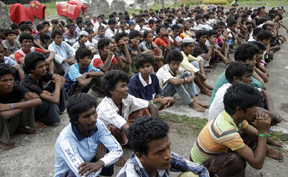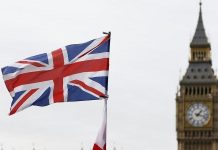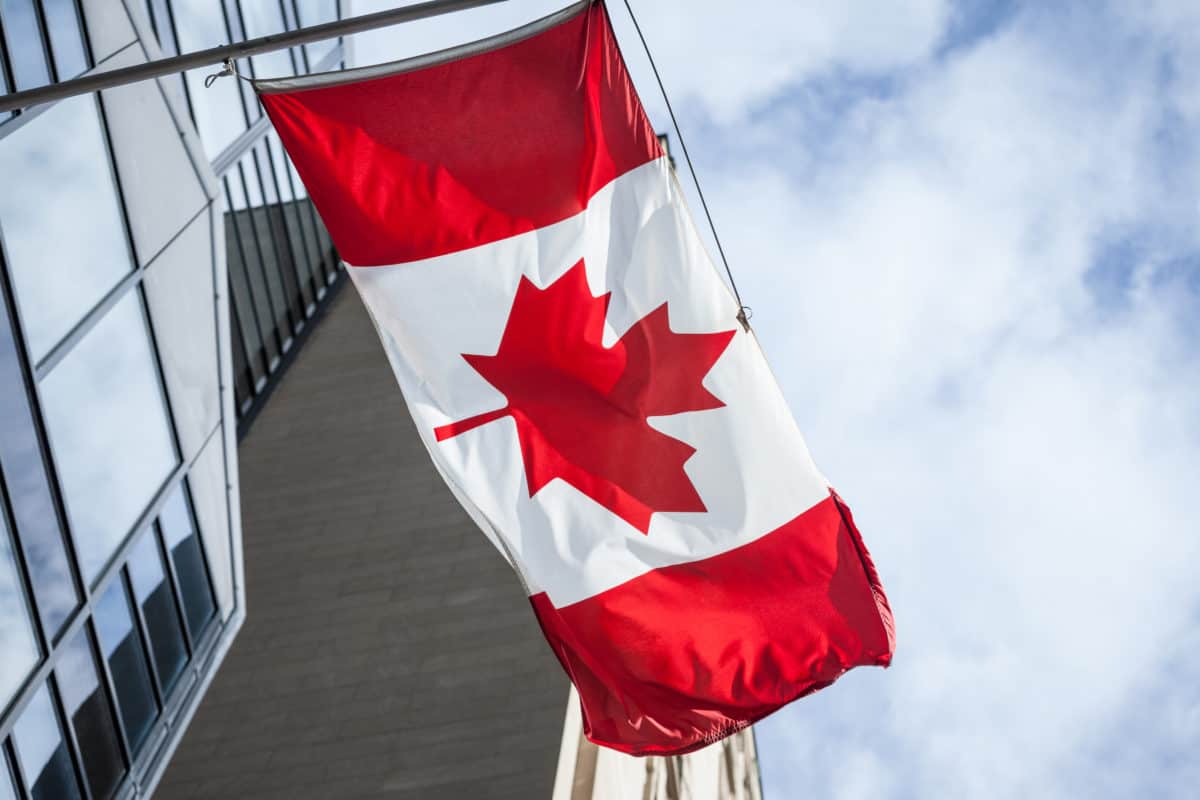Ethnic Rohingya men gather near a temporary shelter in Langsa, Aceh province, Indonesia, Friday, May 22, 2015. Thousands of refugees and migrants have washed ashore in Malaysia, Indonesia and Thailand, about half Rohingya and the rest from Bangladesh, according to the International Organization for Migration. The U.N. refugee agency estimates more than 3,000 others may still be at sea. (AP Photo/Tatan Syuflana)
More than 3,000 migrants abandoned by human traffickers have been rescued or washed ashore this month in Indonesia, Malaysia and Thailand. Some are Rohingya Muslims fleeing persecution in Myanmar, while others are Bangladeshis seeking better economic prospects. Many more are feared to still be stranded at sea, abandoned by traffickers amid a regional crackdown.
Here’s a look at the migrants who have made it ashore over the last three weeks:
May 10: Boats carrying 582 Bangladeshis and Rohingya Muslims washed ashore in Seunuddon, North Aceh district, western Indonesia. They were believed to be from four ships abandoned by their captains and smugglers. Many were sick and weak after more than two months at sea, and dozens were rushed to hospitals for medical treatment. They were first taken to a sports stadium in Lhoksukon, the district capital. They are now being sheltered separately in Lhokseumawe, the former capital and closest big town.
May 10: Hours after migrants wash ashore in Indonesia, Malaysian authorities detain 1,158 immigrants, including 61 children, who were found in two fishing villages on the northern resort island of Langkawi.
The 486 Rohingya and 672 Bangladeshis were believed to have arrived in two boats that were later found stranded at sea after the captain and crew abandoned the vessels. They were believed to have been at sea for weeks, with many of them suffering from malnutrition, diarrhea, abdominal pain and urination problems. They were initially held at the home ministry sports complex and a government shooting range, and transferred to a detention camp on the mainland four days later.
May 12: Two Bangladeshi migrants are found floating about seven miles off the coast in Indonesia’s East Aceh district. The two were believed to have jumped into the sea from a ship, and were transferred to join those already in Lhokseumawe.
May 14: 106 migrants – 54 Rohingya and 52 Bangladeshis – are found on a small island off Thailand’s southern coast of Phang Nga province in an area known for world-class scuba diving called the Surin Islands. The migrants had traveled on the same boat but authorities said it was unclear how they ended up on the island. They were brought to an immigration detention center.
May 15: A total of 682 migrants are found crammed onto a boat off Langsa in eastern Aceh, Indonesia. Local fishermen towed the vessel ashore. The 425 Bangladesh men and 257 Rohingya Muslims – 118 men, 76 women and 63 children – are being sheltered in two warehouses in seaport town of Kuala Langsa.
There were two other rescues of migrants the same day in Indonesia. Nine Bangladeshis and 38 Rohingya were rescued and sheltered in nearby town of Tamiang, and 53 Bangladeshis and 43 Rohingya were rescued and towed to Pangkalan Susu in nearby province of North Sumatra.
May 20: A total of 433 migrants crammed onto a trawler, mostly Rohingya, are rescued by Indonesian fishermen after being stranded at sea for months. The migrants are being sheltered in Bayeun village; the men are staying in three tents, and the women and children are placed in a former paper factory.-AP







